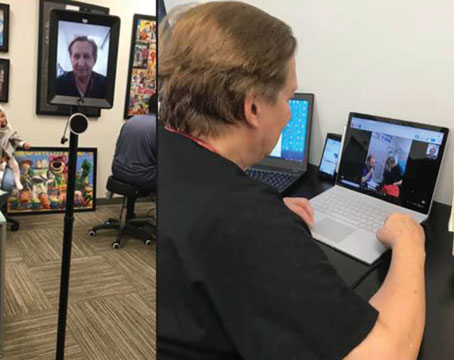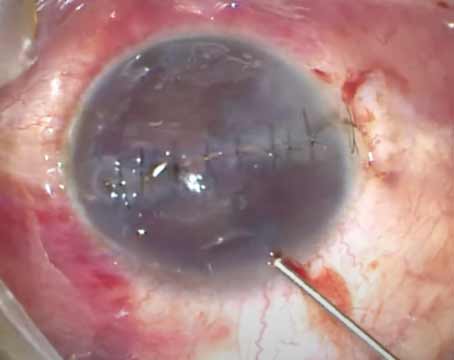 |
So many things changed as a result of the pandemic—and they won’t be going back. The idea that we should physically distance ourselves from each other, socially or workwise, has pretty much become a permanent change to our lives. From standing six feet away while in line at the grocery to consulting with colleagues, its likely we’ll never think of physical space the same way again.
The problem—OK, one of many problems—is that medicine usually involves the “laying on of hands.” In internal medicine it’s almost become quaint to actually perform a physical exam when you can now scan and test for everything. It’s a bit different in ophthalmology. While we’re not usually palpating a liver, we are touching an eyelid at some point, frequently almost nose-to-nose across the slit lamp. We went from being almost the least-contact specialty in medicine to one of the most, since its quite difficult to do a full eye exam from across the room—or across town. At least it used to be.
That said, we all were forced to rethink the whole concept of proximity to our patients since the onset of COVID. It wasn’t easy. Sure, you could get someone else to be close to your patient to take a fundus photo, or have a patient FaceTime their own eye, but is that really an eye exam? Will that replace a “real” in-person exam? The answer to this question depends on what you’re trying to achieve and diagnose. In the absence of being able to be up close and personal, this was all we had for non-emergent care. Health insurers and the government facilitated telemedicine, whatever it meant, by permitting and paying for remote care. Most of us adapted and implemented some form of this as needed. But is it adequate, and is it still valid now that we are hopefully into the endemic phase of COVID? How much of a place will telemedicine have going forward, and is this the future of medical exams? It’s clear it can work for screening and for the follow-up for some conditions, but how will that integrate with everything else we do?
Our medical colleagues have it easier. Do you really need to physically see your GI doc to follow up on your reflux? It’s not like they’re going to massage your esophagus. And do you need an in-person follow-up for your high blood pressure? These physicians were inclined to move to telemedicine anyway, and now it’s a large part of what they do. Not so easy for us ophthalmologists. We’ve automated our exams a lot, but this usually requires a tech-savvy patient. You can’t refract. It’s tough to check a pupil. Forget a tight-slit-beam exam of the anterior chamber. And the parts of the exam that we can do digitally are usually administered by someone who has to put themselves “at risk” by being in the same room as the patient, such as when taking a fundus photograph.
Clearly, as technology improves, we’ll be able to remotely examine a patient more completely and with greater detail. Self-administering eye-exam modules exist, in which the patient puts their head into a machine that refracts, photographs and checks intraocular pressure—and they’ll only get better. But we have a long way to go to replace an in-person exam, not only for visualizing all the detail necessary for a good exam, but for creating that relationship with a patient that’s at the heart of medicine.
I, like most ophthalmologists, love technology, and making life easier for our patients is always a good thing. Telemedicine can help. But while we will move this forward, we must be cautious of the unintended effects on quality of care and disruption to the delivery of care. We must take care to use this burgeoning technology to reshape our practices so this trend enhances, rather than degrades, what we’re able to do.
Dr. Blecher is an attending surgeon at Wills Eye Hospital.





